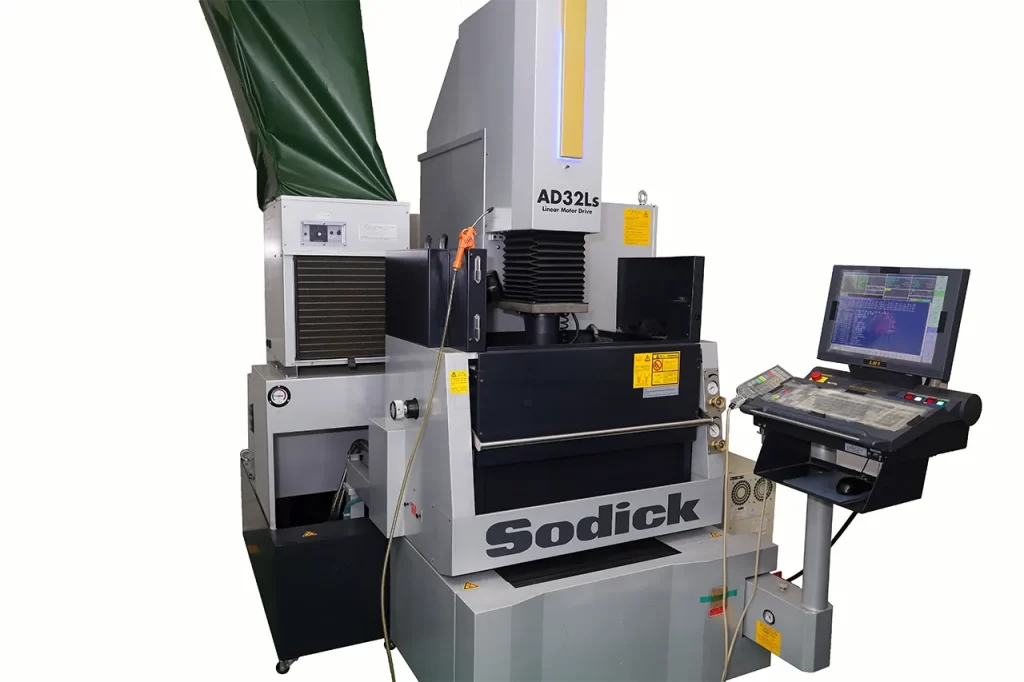The Electrical Discharge Machining Process: Precision Machined Parts
In the world of CNC precision machining, Electrical Discharge Machining (EDM) has emerged as a highly effective process for creating intricate and complex parts with exceptional accuracy.
What is Electrical Discharge Machining?
Electrical discharge machining (EDM) is a non-traditional machining method that uses electrical discharges or sparks to remove material from a workpiece. EDM machining process involves the controlled erosion of the workpiece through a series of rapid electrical discharges between an electrode and the workpiece. EDM provides a precise and controlled means of material removal, allowing for the creation of complex shapes and intricate details.
Electrical Discharge Machining machine type
There are three main types of Electrical Discharge Machining (EDM), each with its own unique characteristics and applications.
| No. | Types of EDM | Description | Description |
| 1 | Die Sinking EDM | Die Sinking EDM, also known as Ram EDM, die sinker EDM , or sinker EDM process, is commonly used for creating cavities or impressions in a workpiece. This process involves the use of a specially shaped electrode, typically made of graphite or copper, which is precisely machined to the desired shape. During the process, the electrode is lowered onto the workpiece, and a series of electrical discharges occur between the electrode and the workpiece, eroding the material and replicating the shape of the electrode. |
|
| 2 | EDM Wire | Wire EDM, Wire Cut EDM or EDM Wire Cutting, utilizes a thin, electrically charged wire as the electrode to cut through the workpiece material. The wire, typically made of brass or copper, is guided through the workpiece using computer-controlled movements. During the process, a spark discharge occurs between the wire and the workpiece, melting and eroding the material along the desired cutting path. |
|
| 3 |
Hole Drilling EDM |
EDM Hole Drilling is primarily used for creating small, precise holes in hard materials. Small hole EDM drilling process involves the use of a rotating tubular electrode, often made of brass or copper, that is fed into the workpiece. As the electrode rotates and advances into the workpiece, electrical discharges occur between the electrode and the material, eroding the material and creating round holes of various diameters. |
Advantages and Disadvantages of Using EDM?
| Types | Pros and Cons | Descriptions |
| Advantages of EDM Machine | 1.Greater Design Freedom | EDM allows for the creation of intricate and complex shapes that are difficult or impossible to achieve with conventional machining methods. |
| 2.Distortion-Free Machining | EDM allows for the creation of intricate and complex shapes that are difficult or impossible to achieve with conventional machining methods. | |
| 3.High-Quality Surface Finish | EDM can produce fine surface finishes, often eliminating the need for additional finishing processes. | |
| 4.Precision | EDM is renowned for its ability to achieve tight tolerances, making it ideal for applications that demand high precision. | |
| 5.Not Affected by Material Hardness | EDM can effectively machine materials with high hardness, such as hardened steels and exotic alloys, which can be challenging for conventional machining methods. |
|
| Disadvantages of EDM Machine | 1.Low Material Removal Rate | Low Material Removal Rate |
| 2.Not All Materials Can be Machined | While EDM is compatible with a wide range of conductive materials, non-conductive materials cannot be machined using this process. | |
| 3.Cost of the Electrode | The electrodes used in EDM are subject to wear and need to be replaced periodically, adding to the overall cost of the process. | |
| 4.Carbon Footprint | EDM involves the use of dielectric fluids, which can have environmental implications if not properly managed and disposed of. |
What Surface Finish Can be Achieved with EDM?
EDM can achieve a wide range of surface finishes, ranging from rough to mirror-like finish. The achievable surface finish depends on various factors, including the EDM process parameters, electrode material, and workpiece material. With proper control and selection of these factors, EDM can produce surface finishes as fine as Ra 0.1 micrometers (4 microinches).

EDM CNC machining Accuracy?
EDM is capable of achieving high levels of accuracy and precision. The accuracy of an EDM process is typically measured in terms of the achieved dimensional tolerances. Depending on the specific application and process parameters, EDM can achieve tolerances ranging from ±0.005mm to ±0.010mm (±0.0002″ to ±0.0004″).
What Materials Can be Machined by EDM CNC Machining?
EDM is primarily used for machining conductive materials. Some common materials that can be machined using EDM include steels, stainless steel, aluminum,copper, titanium, and various alloys. The process is particularly well-suited for challenging materials such as hardened tool steels and exotic alloys.
When to Use Electrical Discharge Machining?
EDM is an excellent choice for precision machining when:
- Complex and intricate parts with tight tolerances are required.
- Conventional machining methods are limited or not feasible due to material hardness or complexity.
- High-quality surface finishes are essential.
- Non-contact machining is desired to minimize the risk of distortion or deformation.
- Micro-scale features or small holes need to be created.
Summary:
Electrical Discharge Machining (EDM) is a highly precise and versatile machining process that offers exceptional accuracy and design freedom. With its ability to machine complex shapes, achieve tight tolerances, and work with a wide range of materials, EDM has become an invaluable tool in the field of precision machining.
Contact us or send us E-Mail (info@uneedpm.com), we look forward to being of your services
